Da poco più di una decina di anni i piccoli frutti si sono ritagliati una posizione rilevante nella produzione frutticola nazionale. Come vediamo dal grafico delle produzioni relative al lampone, le quantità di prodotto nazionale sono cresciute del 50% circa in dieci anni. Analoga e superiore in percentuale la crescita dei quantitativi per il ribes rosso nazionale, pur con volumi notevolmente inferiori dovuto al consumo ed utilizzo limitato nel nostro Paese.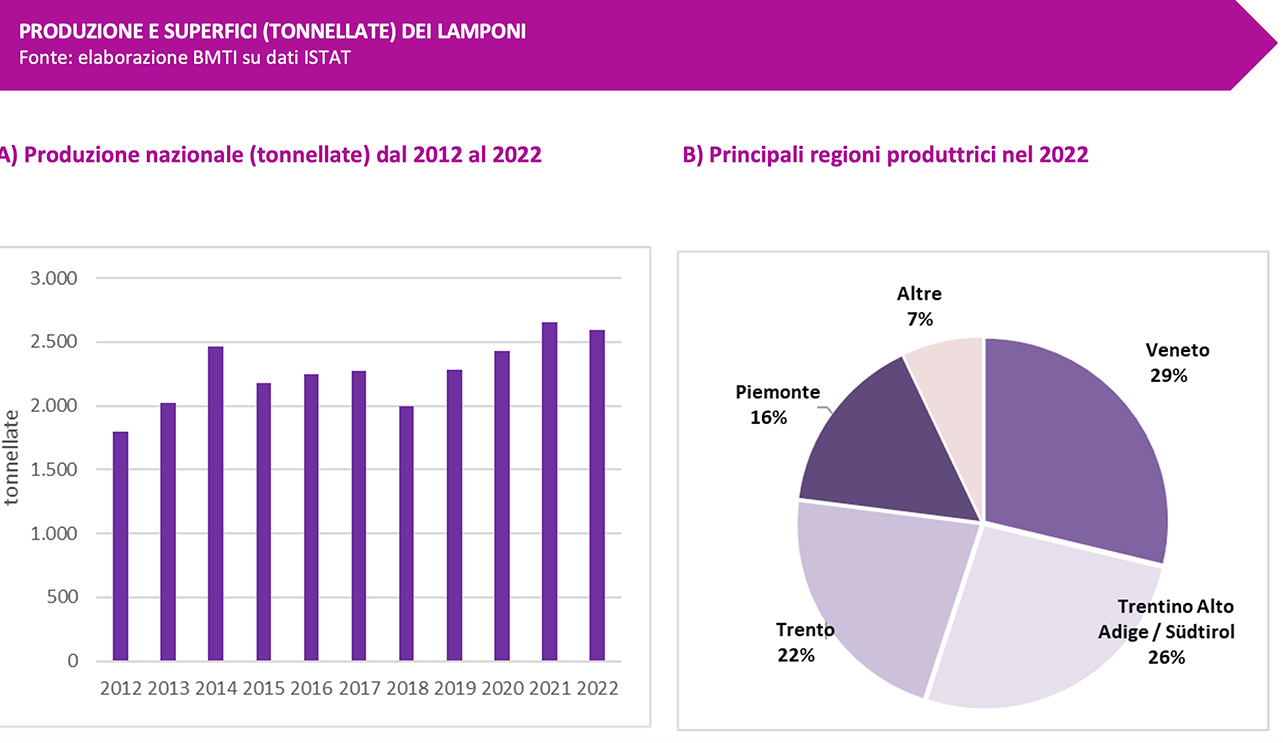
Ribes (con more e mirtilli) al supermercato
Il ribes viene commercializzato nei mercati all’ingrosso principalmente nelle confezioni “miste”, cioè imballaggi contenenti anche vaschette di altre tipologie di piccoli frutti (more, mirtilli, lamponi, fragole). Il ribes raggiunge quotazioni di prezzo elevate, comprese mediamente tra i 10 e 20 euro al chilo e talvolta oltre, anche se le performance migliori si registrano nel periodo gennaio-maggio con le produzioni estere (esempio Cile), ove il prodotto raggiunge valori che partono da 15-20 euro al chilo e raggiungono anche i 40 euro al chilo.
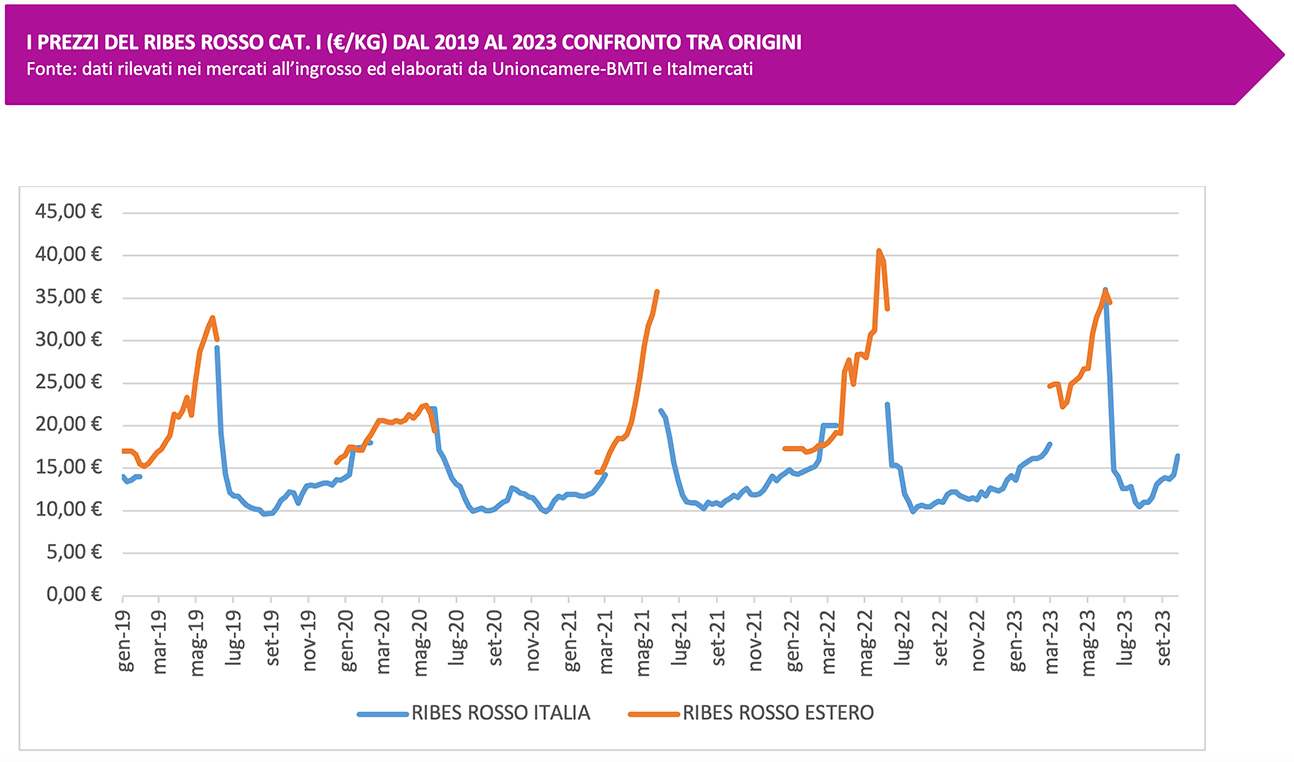 Lampone dal Trentino-Alto Adige, Veneto e Piemonte
Lampone dal Trentino-Alto Adige, Veneto e Piemonte
Più contenuti i valori per il lampone, che oscillano tra i 10 e i 20 euro al chilo, talvolta con picchi sia verso l’alto che verso il basso. È un frutto delicato e di breve conservazione e nei periodi di sovraproduzione, quando il prezzo crolla, trova comunque collocazione nel mercato al dettaglio ai privati consumatori, per la realizzazione di ottime marmellate e composte. Le regioni vocate per questo piccolo frutto rimangono Trentino – Alto Adige, Veneto e Piemonte, che coprono la produzione primaverile/estiva/autunnale ma in prima stagione si trovano nei mercati consistenti e continuativi arrivi di prodotto proveniente dalla Basilicata e Campania di ottime caratteristiche organolettiche.
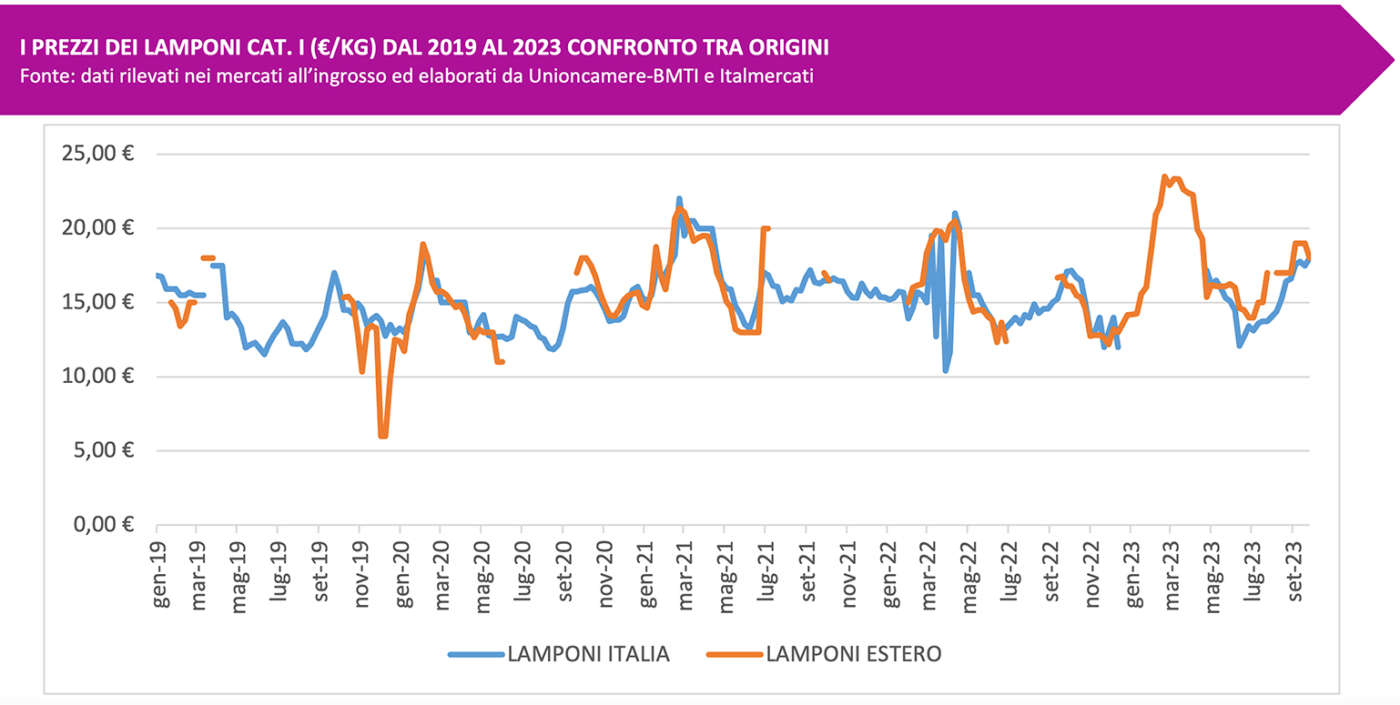 Piccoli frutti rossi, l’import conta
Piccoli frutti rossi, l’import conta
Rimangono elevati i volumi importati, principalmente dalla Spagna e dall’area nord-africana, in particolare dal Marocco, segno che c’è ancora margine a livello nazionale per crescere nelle produzioni, specialmente per quelle del Sud Italia, precoci e tardive. Analogo discorso si può fare per il ribes, anche se il nostro maggior competitor è l’Olanda, che con le sue tecniche di coltivazione riesce a raggiungere i nostri mercati e coprire ampie fasce temporali ove il nostro prodotto non è presente, spuntando quindi quotazioni molto remunerative.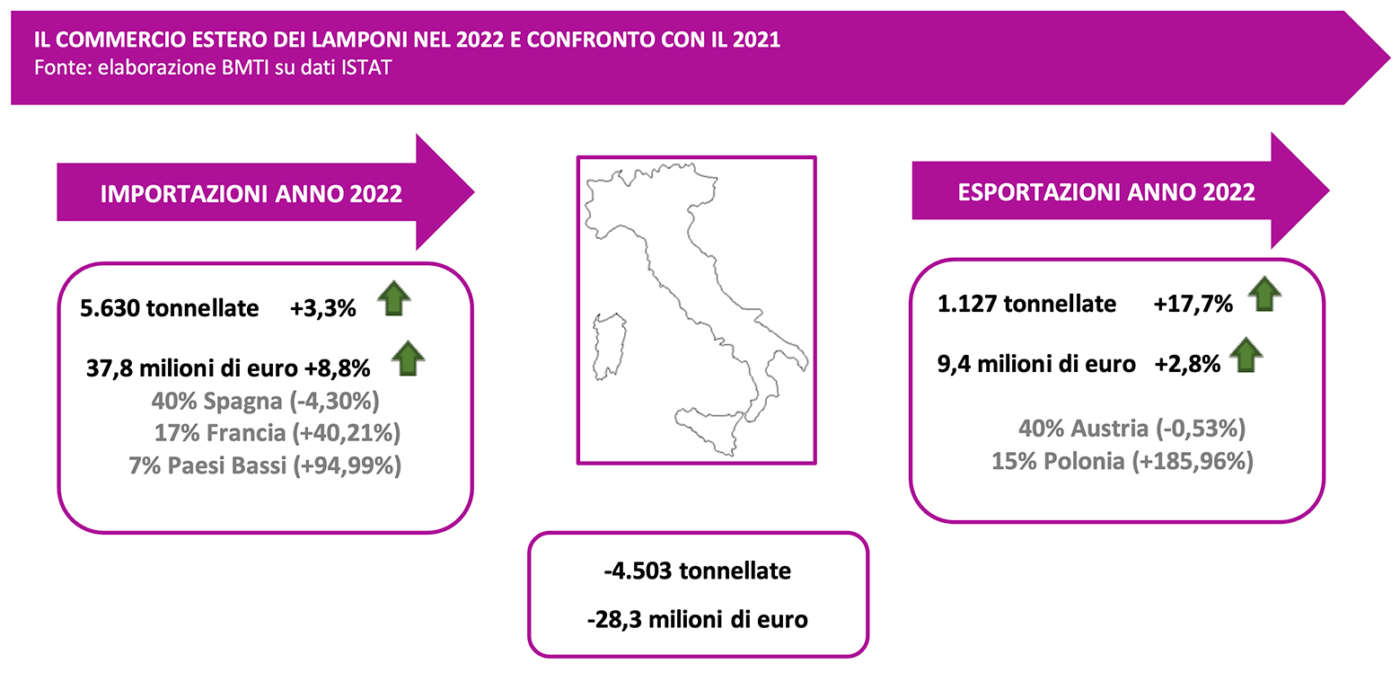
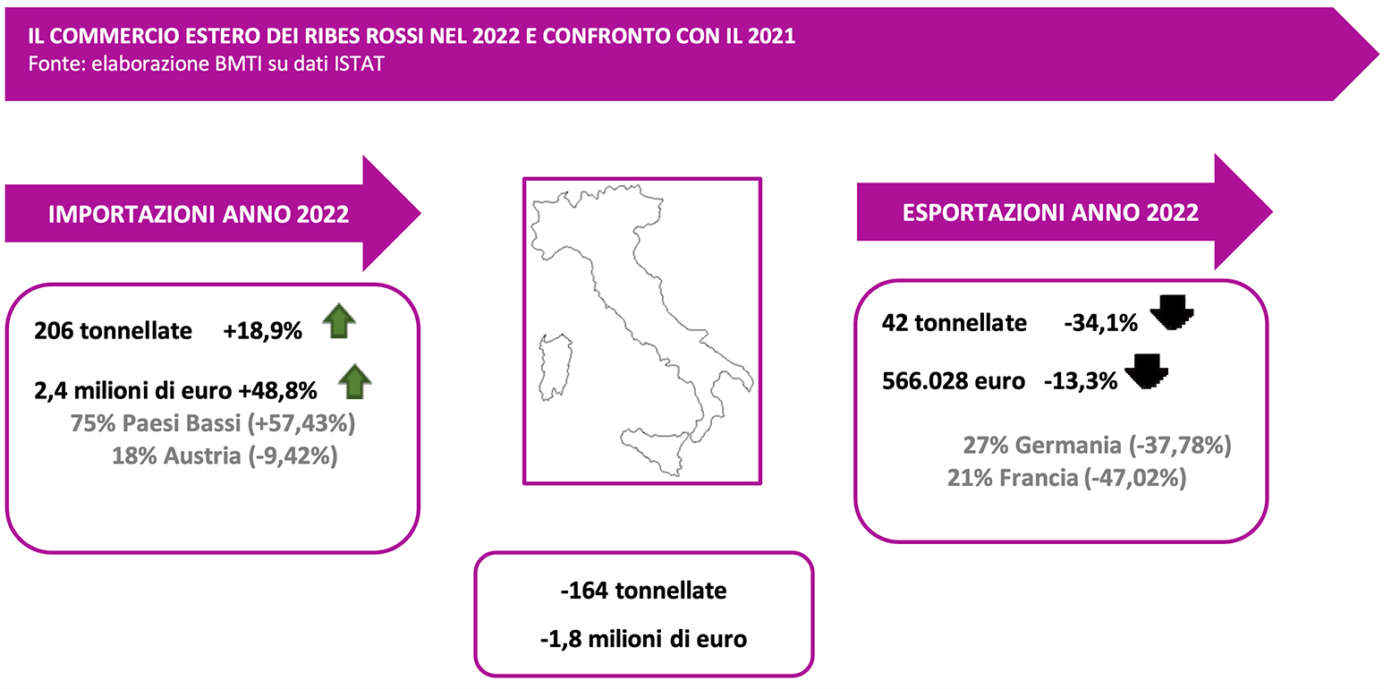
The Italian production of small red fruits is growing
There are more Italian raspberries and currants on the fruit and vegetable stalls, but the share of imported products remains significant
For just over ten years, small fruits have carved out an important position for themselves in the Italian fruit production. As we see from the graph of raspberry production, the quantities of national product have grown by approximately 50% in ten years. The growth in quantities for national redcurrants is similar and higher in percentage, albeit with significantly lower volumes due to limited consumption and use in our Country.
Currants (with blackberries and blueberries) at the supermarket
In fact, currants are marketed in wholesale markets mainly in ‘mixed’ packages, i.e. packages also containing trays of other types of small fruits (blackberries, blueberries, raspberries, and strawberries); it must be said, however, that currants reach high price quotations, ranging on average between 10 and 20 Euros per kilo and sometimes higher, even if the best performances are recorded in the January-May period with foreign productions (for example Chile), where the product reaches values that start from 15-20 Euros per kilo and even reach 40 Euros per kilo.
Raspberries from Trentino – Alto Adige, Veneto, and Piedmont
The values for raspberries are more contained, oscillating between 10 and 20 Euros per kilo, sometimes with peaks both upwards and downwards. It is a delicate and short-lived fruit and in periods of overproduction, when its price collapses, it still finds its place in the retail market to private consumers, for the preparation of excellent jams and compotes. The regions suited to this small fruit remain Trentino – Alto Adige, Veneto and Piedmont, which cover spring/summer/autumn production, but in the first season there are consistent and continuous arrivals in the markets of products from Basilicata and Campania with excellent organoleptic characteristics.
Small red fruits, imports matter
Imported volumes remain high, mainly from Spain and the North African area, in particular from Morocco, a sign that there is still room at a national level to grow in productions, especially for those from Southern Italy, early and late. The same can be said for currants, even if our biggest competitor is Holland, which with its cultivation techniques is able to reach our markets and cover large time periods where our product is not present, thus achieving very profitable prices.










